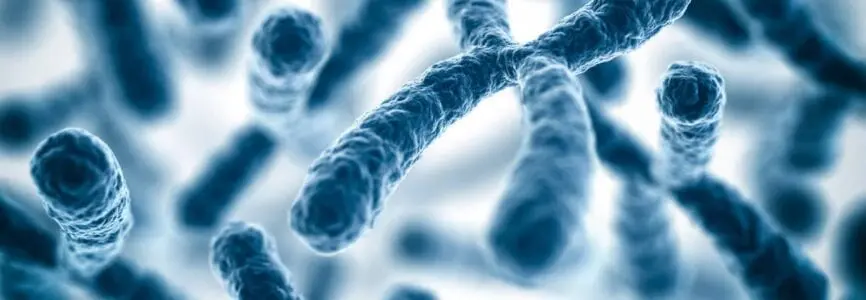Bioethics Forum Essay
Synthetic Chromosomes
A team of scientists announced this week that it had successfully created one of the sixteen chromosomes found in yeast cells, marking a meaningful step forward in that part of genetic engineering dubbed synthetic biology. This is the first time an entire chromosome has been synthesized. Moreover, the chromosome was heavily edited, not simply copied from nature. According to a story in The Scientist, the researchers deleted some genes, changed others, and added still others in order to facilitate the synthesis and make it easier for researchers to alter the genome in still other ways later on. In spite of the extensive changes, yeast cells containing the synthetic chromosome apparently function normally, which in itself is scientifically interesting because it sheds light on the degree to which genomes can be changed without rendering them nonfunctional. Given all this, the research is a notable advance in synthetic biology of eukaryotic organisms.
The announcement is also an interesting case study in the mystique of “synthesis” that surrounds synthetic biology. As is often enough the case in synthetic biology, the initial, fundamental reason to do the research was that synthesis just looks like such a great triumph. As the leader in the effort explained to The Scientist, they were first “drawn to the project for ‘the Mount Everest reason: it’s there and you should do it.’” Some possible tangible benefits are also mentioned in the story – maybe we’ll discover ways of using yeast cells to make medicine – but these benefits provide a secondary rationale, not the chief motivation. The scientists’ relationship to the work is like that of the architect to a grand building: it is wonderful to build! – and it may well be useful to somebody. The reason the intrinsic value of synthesis is interesting is that intrinsic value also sometimes figures in an argument for not altering organisms – they are wonderful to behold as they are! Let them be! – but claims about intrinsic value on the nature-preserving side look emotional and irrational to those on the nature-synthesizing side.
Additionally, synthesis is presented as the best criterion for understanding. Synthetic biologists like to cite the physicist Richard Feynman’s line, “What I cannot create, I do not understand.” A version of this line was encoded in the DNA of the “first ever synthetic organism” that scientists at the J. Craig Venter Institute claimed in May 2010 to have created. So, too, with the first ever synthetic chromosome: NPR quotes a scientist explaining the value of the work this way: “You can look at a car and you think you understand a car. But if you really understand a car you should be able to build one.”
It’s an interesting question whether building a thing is really the test of understanding it. One could be a master car-builder but a very bad driver; does such a person understand his car better than someone who drives it exceptionally well? Similarly, if we discover how to build a bear (a living bear) or a person, can we therefore claim to really understand those things? Perhaps there are different senses of “understanding” at stake; if so, we should ask how these different senses matter.
In any event, there’s also an interesting question about the accuracy of the building metaphor in synthetic biology. Here’s how NPR gave the news about the yeast chromosome: “The team built yeast chromosome No. 3 from scratch. (More precisely, they assembled the DNA strand that’s the core of the chromosome, and put it in a yeast cell, which then proceeded to package it up in proteins and coil it into the compact structure of a chromosome.)” That sounds like the yeast itself played a pretty key role, since exactly how DNA is packaged up and put away is vitally important for the functioning of the organism. It has to be packaged up in such a way that the cell can get at it at the right times. Arguably, then, the scientists’ accomplishment was somewhat like assembling the material for a car chassis, inserting it into an existing car, and then having the car itself get it in just the right shape and install it. Similarly, some scientists noted that the first ever synthetic organism that JCVI claimed to have built was actually a synthetic genome that was then inserted into an existing cell, where it found a home. JCVI said that the genome “took over” the cell, but why that’s the best metaphor for what happened isn’t clear. Why not say it was “adopted”? Or that a “happy union” occurred between the genome and the things in the cytoplasm – the integration of genome and cytoplasm that amounts to a measure in the “music of life,” as the systems biologist Denis Noble puts it?
This is not to sneer at these scientific achievements. It’s to try to understand them better, and maybe to understand their moral implications better. “Synthetic biology” alarms some people because they see genes as the very book of life – the part of a living things that really matters morally. In this view, to create or alter a gene is to do something that is morally very different from anything that has ever been done before. But people see genes this way partly because scientists encourage them to.
Gregory E. Kaebnick is a research scholar at the Hastings Center and editor of the Hastings Center Report. He is the author of Humans in Nature: The World as We Find it and the World as We Create It (Oxford 2014).
Posted by Greg Kaebnick at 03/28/2014 04:31:01 PM |













